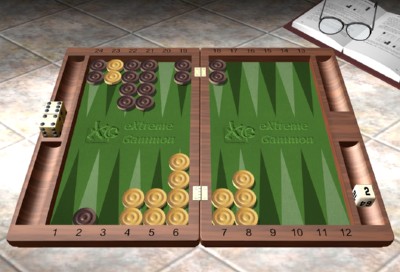Cash game. White owns the cube. White on roll.

Should White double? If White doubles, should Black take or drop?
In this position, White took an early cube based on his ownership of Black’s 2-point and the fact that Black still had a checker left to escape. After that, the game developed almost perfectly for him. His deuce-point game caused Black to bear in awkwardly, while White’s front position came together and prevented Black’s back checker from escaping. After Black’s last roll (an awkward 4-4), White finally has a clear advantage, although he still trails by 47 pips in the race. Is this the right time to double?
The answer is yes, and in fact Black should give this game up. His pip count lead is largely an illusion, since White is so close to completing a full prime and Black isn’t even at the edge of the 5-prime yet. In addition, Black’s game is on the verge of collapsing completely. Plenty of numbers leave additional shots next turn for Black (6-5, 5-4, 6-2, 5-1, and 4-2 are the obvious ones), while doubles crunch his position further.
When your opponent’s position is overstretched and crumbling, you have to double before the blots appear; doubling later will just give him an easy pass.
Part of doubling, however, is knowing how to play the positions that arise. Suppose you do double and Black takes. How would you play these numbers for White? (Scroll down a bit to see the answers.)
6-5?
6-4?
3-1?
4-3?
5-1?
6-5: Run with 23/12. Don’t break your prime by hitting on the 2-point. The prime is very powerful with Black not yet at the edge, and hitting may prevent Black from moving.
6-4: Run with 23/13. Similar to the 6-5 roll, although it’s a closer call because making the 2-point is constructive.
3-1: Slot with 6/3 8/7. (6/5 instead of 8/7 is also good). This makes you a favorite to complete your 6-prime eventually, while allowing Black to roll his disaster numbers like 6-5 and 5-4.
4-3: 8/4 6/3, for the same reason.
5-1: 8/3 6/5, for the same reason. Slotting is a key idea in this sort of position. Killing checkers by playing 6/1 8/7 makes the 6-prime too hard to complete later. You always want your checkers active rather than dead.





